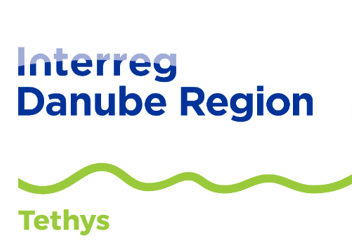Seven sampling sites in Slovenia were showcased as an example of a sampling campaign.

TETHYS: Coordinated Danube Action for the titanic endeavor of tackling hazardous substances water pollution under changing pressures, challenges and targets, 1.1.2024-30.6.2026, Radmila Milačič
Seven sampling sites in Slovenia were showcased as an example of a sampling campaign.
Within the INTERREG project Tethys, Jožef Stefan Institute (JSI) organized a hybrid meeting: Workshop on sampling strategy and sample preparation procedures, which was held on 27 and 28 May 2024 in Ljubljana, Slovenia.

The project bears the name of the ancient Greek titan goddess of freshwaters, as it addresses the titanic task awaiting the Danube countries to effectively tackle hazardous substances (HS) water pollution in the context of the ground-breaking EU legislative changes, coupled with emerging external pressures and challenges, among others climate change, energy crisis and market supply shortages. In this context, the transnational transfer of HS pollution obtains environmental, societal, political and legal dimensions even broader and more complex than before; thus, two scales, the national ones for the single Danube River Basin (DRB) countries and the transnational one addressing the DRB as a whole, need to be addressed in parallel. Building on the outputs of the DTP Danube Hazard m3c and of other projects and initiatives, Tethys aims to tackle HS water pollution through a holistic set of activities that will develop, test, and provide to national organizations and to the ICPDR fit-for-purpose, target-oriented and cost-efficient procedures, workflows, and tools. The developed solutions will be harmonized at DRB scale and at the same time will be adjusted to the national specificities of the Danube countries, with special focus on aligning know-how, methods and tools between EU and non-EU territories. The planned approach will cover all required steps from monitoring and chemical analysis, data management and processing to emission modelling and risk assessment. By the end of the project, non-EU and EU countries in the DRB will have jointly developed fit-for-purpose strategies to prioritize resources allocated to monitoring and to select the most appropriate techniques and procedures to generate a solid data basis for HS emissions inventories, including specific pathways under-represented so far. This goes far beyond optimizing current monitoring programmes executed by the countries which focus on the status assessment of water pollution. Discovery and awareness of new substances of emerging concern and regulatory changes regarding their maximum allowed levels in water resources introduce new methodological challenges, as very low threshold levels require extremely sensitive chemical analyses, also for compounds not covered previously in mandatory monitoring programs (e.g. PFAS and pharmaceuticals), thus for which established analytical procedures are not available yet. To respond to this challenge, Tethys will merge and transfer available know-how being developed in other scientific projects and institutional initiatives, will perform interlaboratory comparisons and will jointly develop detailed protocols based on the lessons learned from them.
These will immediately improve the chemical analyses and institutional capacities of selected institutions within the project implementation period and will be very valuable for all other laboratories in the DRB, which are facing the very same challenges. New HS databases, coupled with data-processing and pollution assessment packages, as well as comprehensive HS emission models - urgently needed to generate HS emission inventories and to properly evaluate, plan and prioritize actions and measures - will be fully implemented as operative tools at national scale. National solutions are adapted to each country based on territorial and institutional needs, yet maintaining a high level of compatibility, to facilitate reporting, coordinated implementation and evaluation of measures across national borders. By applying the "learning by doing" principle, a major focus lies on the joint demonstration and step-by-step implementation of those complex tools, so that by the end of the project the partners will have implemented them at a fully operative scale and will have sustainably enhanced their institutional capacity. In this way, Tethys closes significant gaps in knowledge, capacity and availability of tools in operation between EU and non-EU countries. The implementation of such tools will be a breakthrough for the digitization, sustainable management, quality insurance and full exploitation of environmental data as well as for the possibility of carrying out for the first time new complex types of risk analyses required by the new EU policy proposals in the field of water quality. In parallel, by the end of project the ICPDR will possess fully operative and ft-for-purpose transnational HS database coupled with data-processing and pollution assessment package and transnational HS emissions model to support regular transnational modelling-based status, risk and scenarios assessment for policy support under new complex challenges and pressures. Finally, Tethys will produce a joint coordinated strategy – to be adopted and included in the DRBMP 2027 - prioritizing actions for effective, future-oriented control of HS in the Danube River Basin elaborated on a sound evidence base and on newly required risk approaches, enabling a right response to the new challenges.